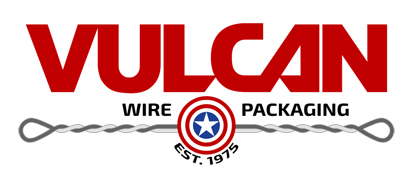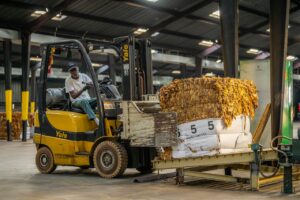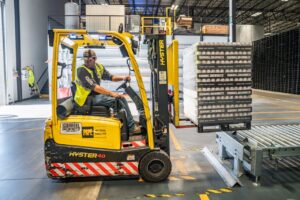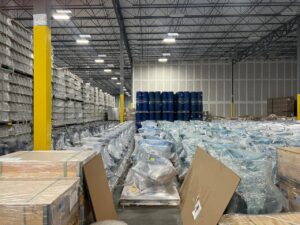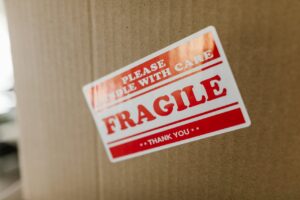
As a business that handles large quantities of cardboard and other packaging material, it’s important to know the most efficient way to organize and recycle it. Should you be bundling, baling, or compacting your waste? Which method is right for you? The answer lies in your business’ operations, what kind of material you’re dealing with, and in what quantities.
Vulcan Wire, Inc. offers all of the baling supplies you need to efficiently run your machine. Shop Now.
Compacting
First and foremost, compacting is a significantly different function than baling and bundling. Most often, compacting is used for trash and non-recyclable products. However, that’s not to say businesses don’t use this method for their cardboard.
Compacting is an efficient means of reducing the volume that some material takes up. Thus, if your primary concern is to have a machine that can reduce the volume of recyclable and non-recyclable products, an industrial compact may be for you. On the other hand, if your business doesn’t need to compact waste and you solely need to handle cardboard, it’s best to opt for one of the other options, below.
Bundling
To bundle a load of cardboard is to simply strap it all together with ties or wire. While the process of bundling may differ from business to business, the premise is still the same. Typically, manual labor is used to stack cardboard, force it together to reduce volume, and then tie it all up.
Cardboard bundling is good for quick fixes in a warehouse when you need to organize your cardboard and move it out of the way. However, bundling your cardboard is not ideal for shipping or recycling. Other businesses that would receive your recycling will not do so unless it’s properly handled and organized. Unfortunately, with manpower, bundling cardboard will not suffice, as the material cannot be properly compacted and tied.
Baling
If a business has enough cardboard to fill three bins, then baling would be a practical option. The choice would be to continue to spend on hauling the trash bin, which is up to $400 per load plus dump fees, or to bale the cardboard and receive about $50 per bale (based on estimated market value).
Depending on your business, you can find various models of balers that can suit your recycling needs. Balers come in all different types, from vertical fed balers to two ram auto-tie balers.
Businesses use baling to save time, energy, and space. The most efficient balers will thoroughly compact all the material you feed it and automatically tie it all up. Balers can use different strengths of ties for different types of cardboard. Similarly, most balers can handle all types of cardboard, from paperboard to double wall corrugated fiberboard.
The Bottom Line
If you’re a business owner who wants to efficiently manage all of your cardboard, your best option is a baler. Industrial balers are practical, essential, and time-saving. Over time, they’re likely to save you money by reducing the man-hours required in bundling cardboard. We hope you now understand whether you should be bundling, baling, or compacting your cardboard!
Purchase Baling Materials from Vulcan Wire
Businesses that use a baler need to make sure they have the right products to use in tandem, such as baling wire. Here at Vulcan Wire, we supply businesses of all backgrounds with high-quality baling wire. View our inventory to see which type of wire will best fit your needs.
